Galaxy S9 vs. Galaxy Note 8: What Should You Buy?
There are plenty of reasons to pick the newer Samsung Galaxy S9 or S9+, but the Note 8 still very much deserves your attention.
From the Snapdragon 845 processor and new Super Speed Dual-Pixel camera to new AR features, the Galaxy S9 and Galaxy S9+ pack all kinds of improvements. But that doesn't mean the already available Galaxy Note 8 shouldn't be on your shortlist for the next phone you buy.
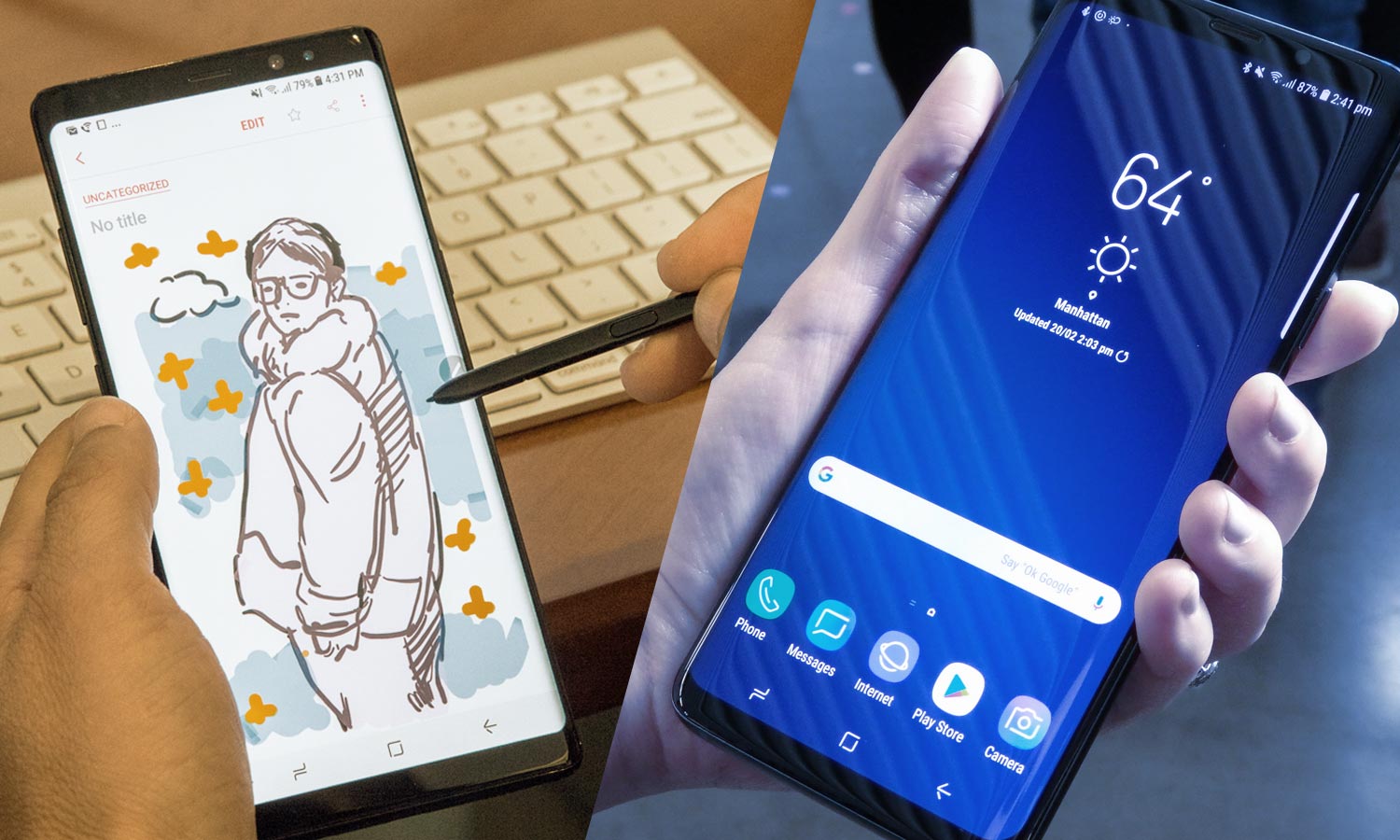
Based on our hands-on time with the Galaxy S9 and full review of the Note 8, we wanted to help you compare Samsung's flagships so you can start thinking about which handset belongs in your pocket once the S9 goes up for sale on March 16.
Galaxy S9 vs. Note 8: Specs Compared
| Phone | Galaxy S9 | Galaxy S9+ | Galaxy Note 8 |
| Price | $720 | $840 | $950 |
| OS | Android Oreo 8.0 | Android Oreo 8.0 | Android 7.1.1 |
| Screen Size (Resolution) | 5.8 inches (2960 x 1440) | 6.2 inches (2960 x 1440) | 6.3 inches (2960 x 1440) |
| CPU | Snapdragon 845 | Snapdragon 845 | Snapdragon 835 |
| RAM | 4GB | 6GB | 6GB |
| Storage | 64GB | 64GB | 64GB |
| Rear Camera | 12-MP Super Speed Dual Pixel (f/1.5, f/2.4) | Dual cameras: 12-MP (f/1.5, f/2.4) and 12-MP (f/2.4 telephoto) | Dual cameras: 12-MP (f/1.7 wide angle), 12-MP (f/2.4 telephoto) |
| Headphone Jack | Yes | Yes | Yes |
| Battery | 3000 mAh | 3500 mAh | 3300 mAh |
| Size | 5.8 x 2.7 x 0.33 inches | 6.2 x 2.9 x 0.33 inches | 6.4 x 2.9 x 0.34 inches |
| Weight | 5.8 ounces | 6.7 ounces | 6.9 ounces |
Design and Displays
One thing is almost certain: The Galaxy Note 8 will still sport the biggest screen in Samsung's lineup at 6.3 inches. The Galaxy S9 and S9+ still feature 5.8-inch and 6.2-inch displays, respectively, just like last year's S8 models. However, the S9 and S9+ are a bit brighter than before, reaching 482 nits in our testing compared to the Note 8's 408 nits.
In addition. Samsung trimmed back the bezel on the S9 and S9+ even more, so you get a big screen with less wasted space around it.
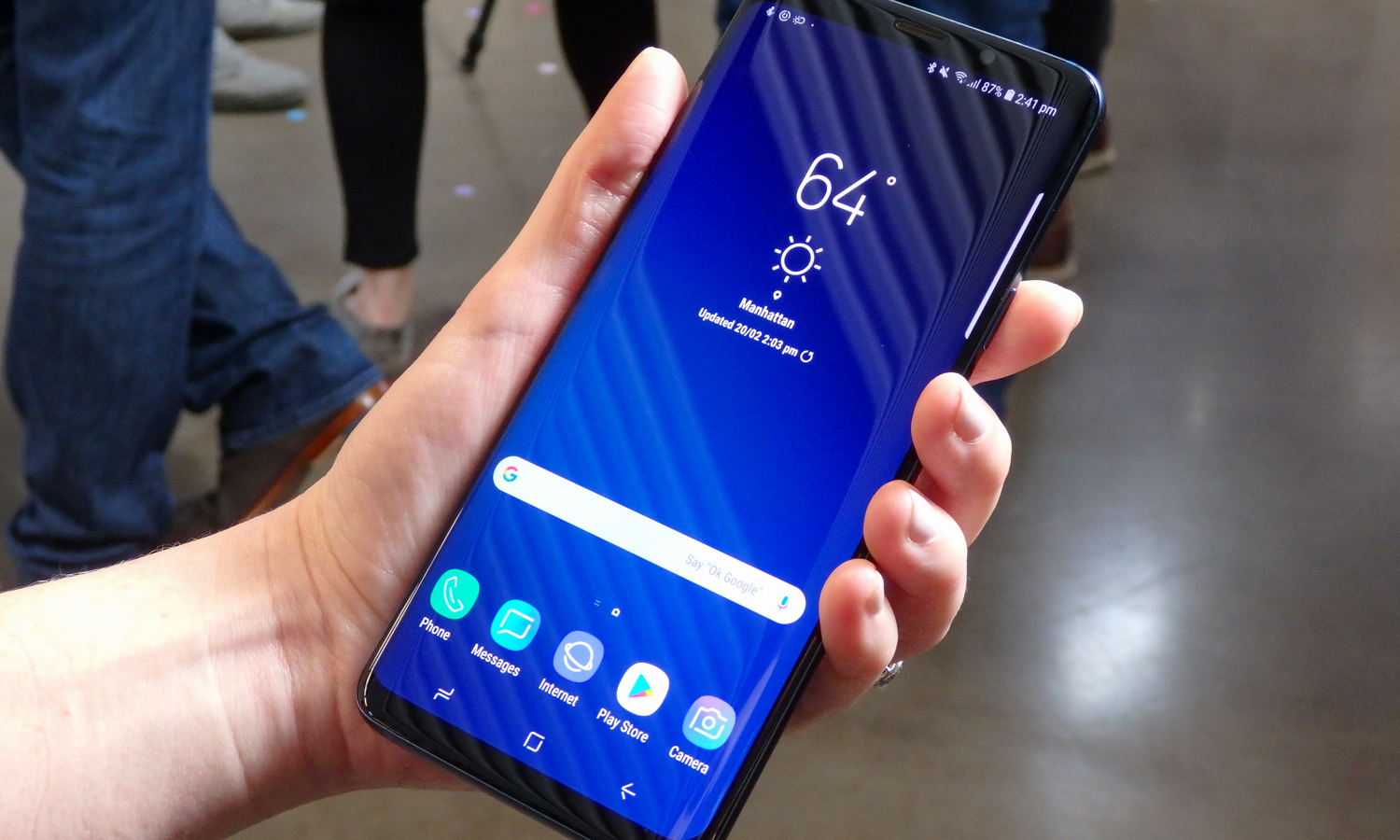
Regardless, the Note 8 is the heaviest and largest phone in Samsung's lineup. If you prefer to use a phone with one hand, the more compact S9 will probably be your best bet.
Samsung addressed one of the biggest flaws on the Galaxy S8 and Note 8 with the Galaxy S9. Instead of placing the fingerprint sensor to the side of the camera lens, the sensor found a home beneath the S9's camera. This will help prevent inadvertently smudging of the lens.
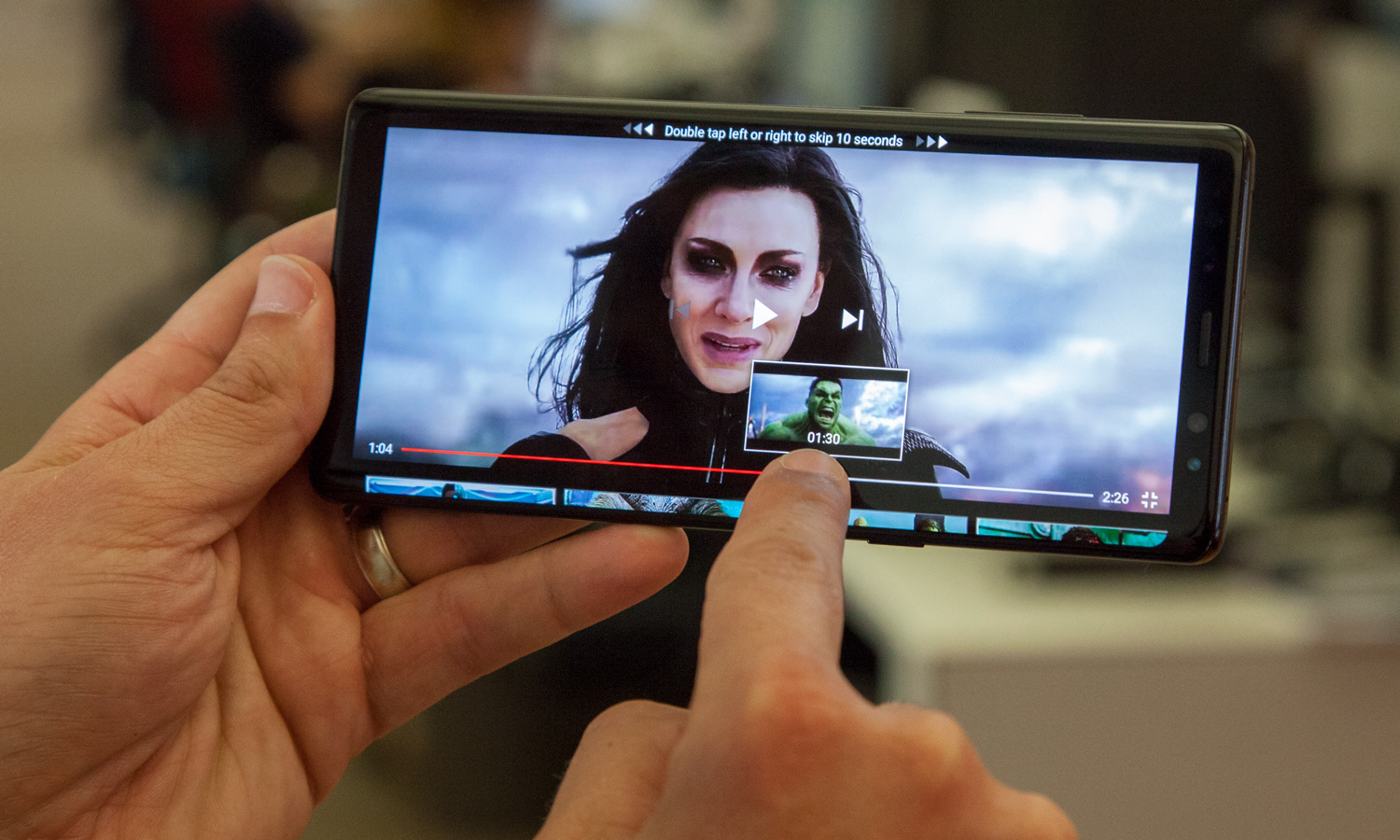
Color options for the Galaxy S9 and S9+ Midnight Black, Lilac Purple and Coral Blue. The Note 8 comes in only Midnight Black and Orchid Gray in America.
Overall, little has changed in terms of design and displays for Samsung's latest flagship, but we'll give the edge to the Galaxy S9 and S9+ for their slightly brighter screens and relocated fingerprint sensors.
Winner: Galaxy S9
Cameras
The Galaxy S9 and S9+ boast a new Super Speed Dual-Pixel camera is that offers faster autofocus and better noise reduction than what's in the Galaxy Note 8. Plus, with a variable aperture that goes from f/1.5 to f/2.4, the S9 and S9+ lets in 28 percent more light than the Note 8, making the newer phones a better choice for snapping photos in dim conditions.
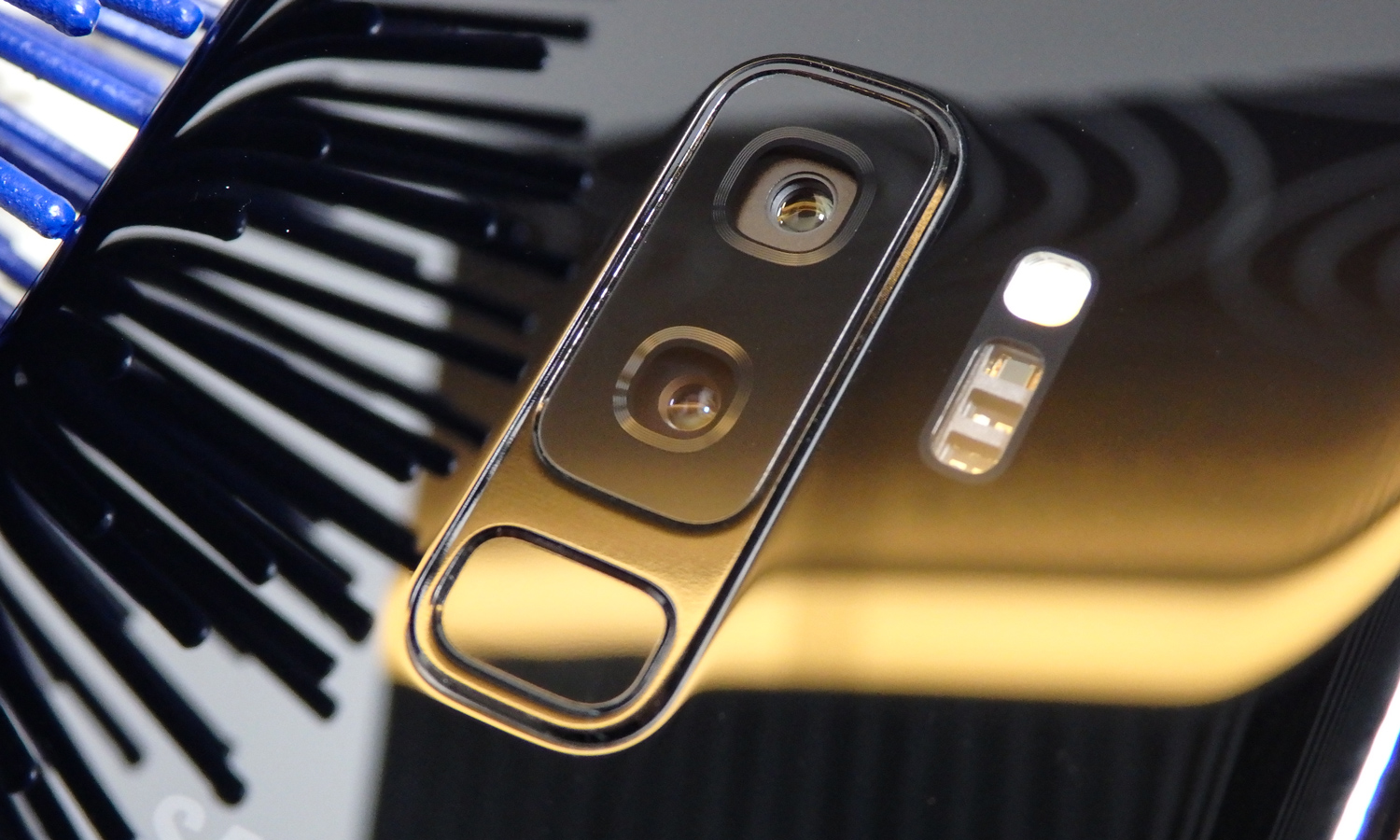
However, only the S9+ sport dual rear cameras, which enable the same 2x optical zoom and Live Focus features the Note 8 currently offers.
The Google Pixel 2 has performed better in low light than any Android phone up until this point. But the S9, and especially the S9+, leapfrogs Samsung's previous efforts thanks to their wider aperture and improved post-processing via the embedded DRAM inside the phones' new image sensor. This helps keeps noise down, which produces better exposures in less-than-ideal lighting conditions.
MORE: Best Smartphone Camera - Phones With the Best Quality
The other area where the Galaxy S9 ups the ante is Super Slow-Mo video recording. Both the S9 and S9+ capture footage at up to 960 fps at 720p HD resolution. The Note 8 is limited to 240 fps.
Both the Galaxy S9+ and Note 8 have dual rear cameras, which enable 2x optical zoom and Live Focus for blurring out the background on portraits. However, the S9+ wins for its faster autofocus, aperture tricks and slow motion capabilities.
Winner: Galaxy S9
Specs and Performance
If you want the fastest Android phone, you're going to want to get your hands on the Galaxy S9 or S9+, as they're the first phones in the world with Qualcomm's new Snapdragon 845 processor.
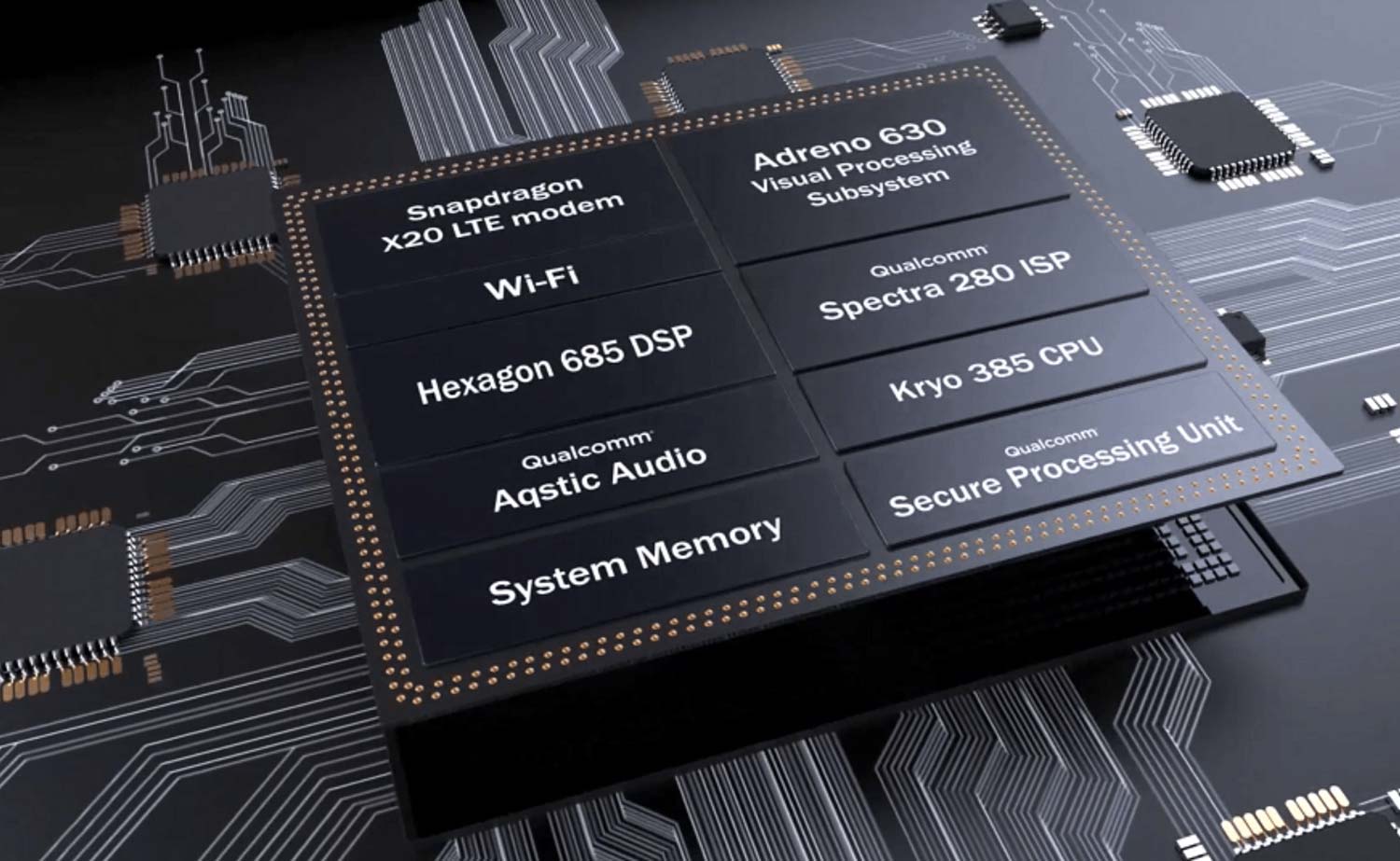
According to Qualcomm, the 845 chip promises a 25 percent improvement in "performance uplift," which means you should expect faster app launches and smoother performance in processor-intensive apps like video editing. In addition, there should be a 30 percent boost in graphics performance. Check out the Snapdragon 845 benchmark results.
On the other hand, the Snapdragon 835 chip in the Note 8 is no slouch, and it's paired with a robust 6GB of RAM. The S9 will pack 4GB of RAM and the pricier S9+ will come with 6GB. Regarding storage, the S9 and Note 8 are neck and neck with 64GB and MicroSD slots for optional expandability.
In terms of benchmarks, the 845 chip helped the Galaxy S9+ we tested deliver a Geekbench 4 score of 8,295 — roughly 2,000 higher than the Note 8, yet another 2,000 off from the A11 Bionic processor inside the iPhone 8 and iPhone X. If you want the fastest Android phone out there, the S9+ is your best bet.
Winner: Galaxy S9
MORE: Top Snapdragon 845 Features That Will Supercharge's Phones
Special Features and Software
The Galaxy Note 8 stands out with its included S Pen, which lets you draw, take notes and even translate languages on the fly. Our favorite feature is Screen Off Memo, which allows you to jot down items without turning the phone completely on.

One nifty feature of S Pen is Live Messages, which lets you send your scribbles to friends and family as a short animation via a text message.
Another special feature on the Note 8 is App Pair, which allows you to launch two apps side by side at the same time. This feature is also available on the Galaxy S9 and S9+.
The most attention-grabbing feature of the Galaxy S9 is AR Emoji, which lets you capture a 3D avatar of yourself, which you can then personalize and share out via messaging and social apps. It's a neat idea, but the execution leaves a lot to be desired. This is not a feature you'll want to buy a Galaxy S9 for, at least not yet.
Other S9 special features include beefed up augmented reality capabilities. For instance, Bixby Vision can translate foreign languages on the fly when you point the S9 or S9+'s camera at a sign, menu etc. You can also try on makeup virtually with the front camera and then buy it directly form Sephora.
In terms of security, the Galaxy S9 introduces Intelligent Scan, which combines the iris scanner and face recognition for unlocking your device. Furthermore, both phones are compatible with Samsung's DeX Station for a PC-like experience when connected to an external monitor.
Regarding the operating system, the S9 and S9+ have Android Oreo, which is the latest version of Android's software. The Galaxy Note 8 currently rocks the old Android Nougat, but an upgrade to Oreo is imminent. Ultimately however, the Note 8 wins out for its S Pen features.
Winner: Galaxy Note 8
MORE: When Is Your Phone Getting Android 8.0 Oreo?
Battery Life
If you look at the battery life results for the Galaxy S8, S8+ and Note 8, all offer excellent endurance. On the Tom's Guide Battery Test, which involves continuous web surfing over 4G LTE, the Note 8 lasted 11 hours and 11 minutes, which is well over the 9:40 smartphone average. The S8 and S8+ turned in runtimes of 10:39 and 11:04, so they were not far behind.
The S9 and S9+ will have the same battery capacities as their predecessors at 3,000 mAh and 3,500 mAh, respectively. The Note 8 has a 3,300 mAh battery. And although the S9 and S9+ should both outlast the Note 8, because the new Snapdragon 845 chip is reportedly more efficient than the 835 processor in the Note, the S9+ actually turned in a worse result than its predecessors at 10 hours and 49 minutes. This means you'll actually have to spring for Samsung's older flagship to get a longer lasting phone, barring any software updates that might improve the situation on the S9 and S9+.
Winner: Galaxy Note 8
Price and Value
The Galaxy S9 starts at $720, while the Galaxy S9+ starts at $840, though pricing varies by carrier. For example, Verizon charges $799 and $929, respectively, for the two handsets.
MORE: Best Samsung Galaxy S9 Deals
The Galaxy Note 8 costs about $950 through most carriers, but you can find it for as little as $899 on sale. Check out our Galaxy Note 8 deals for the latest offers.
Winner: Galaxy S9
Outlook
The Galaxy S9 and S9+ are faster, cheaper and do more with augmented reality. And the rear camera is superior than the Note 8's, offering better photo quality in low light along with super slow-mo video. If you want a 2x optical zoom, you'll want the dual cameras on the S9+, which is the closest competitor to the Note 8.
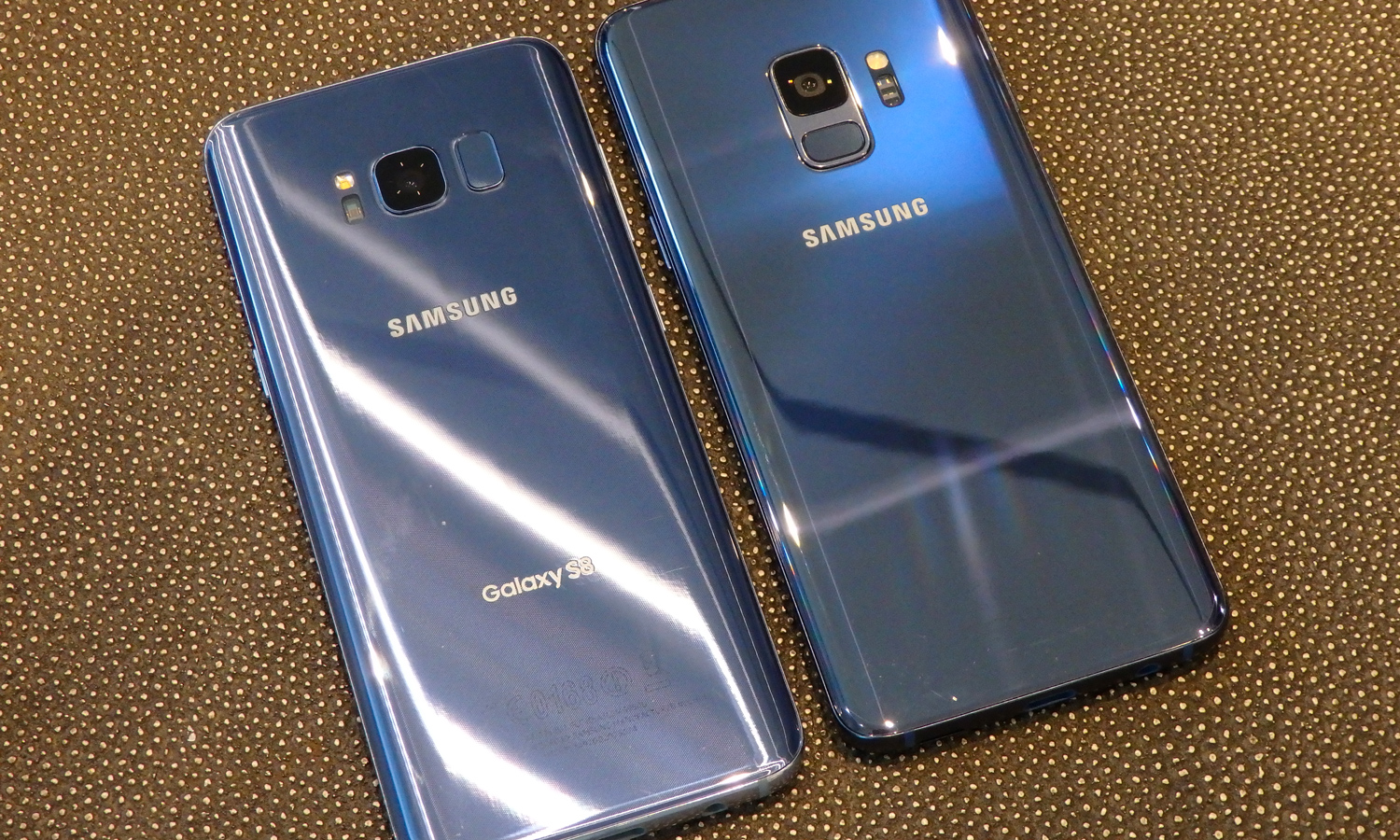
Given the lower starting prices of the Galaxy S9 and S9+, newer internals and slightly improved design, we think the newer phones are a better buy. However, the Galaxy Note 8 remains the Samsung handset to get if you prefer a bigger screen and find the idea of the S Pen useful. And while the Note 8's main rear camera isn't as advanced as what's promised for the S9, you still get dual lenses for shooting compelling portraits and a 2x optical zoom.
Sign up to get the BEST of Tom's Guide direct to your inbox.
Get instant access to breaking news, the hottest reviews, great deals and helpful tips.
Mark Spoonauer is the global editor in chief of Tom's Guide and has covered technology for over 20 years. In addition to overseeing the direction of Tom's Guide, Mark specializes in covering all things mobile, having reviewed dozens of smartphones and other gadgets. He has spoken at key industry events and appears regularly on TV to discuss the latest trends, including Cheddar, Fox Business and other outlets. Mark was previously editor in chief of Laptop Mag, and his work has appeared in Wired, Popular Science and Inc. Follow him on Twitter at @mspoonauer.
-
arismendyfeliz02 I think note 8 will be a better option over the s9+ but, let's wait what happens after the lunch on s9+Reply -
vcarrpeters I've had the Note 8 for 2 weeks and hate it. The reception is horrible and the battery life isn't what they're saying it is while surfing internet, it consumes the battery within an hourReply -
respite2410 Here's my 2 cents. I've had the Note 8 for about 6 months and I've really enjoyed it. I got it at a time when they had a promo where you could trade a phone in for, in my case, $300 plus an accessory freebie. So those discounts made it affordable for me. If you need a phone right now I would go with the 8. It's been in the real world use for 6 months now so all of the glitches have already showed themselves and there's lots of info out. With the 9S series you're dealing with a device that's new and full price in most cases and it has had little time in the world. So if I were going for the 9S and 9S+, I'd wait for some discounts and field time.Reply

